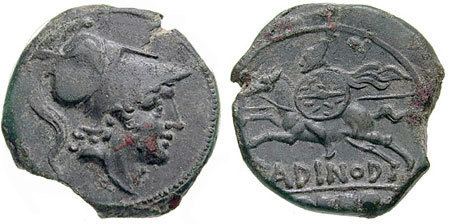 | ||
The quincunx was an ancient Roman bronze coin produced during the Roman Republic. It was not part of the standard Roman monetary system. It was only produced during the Second Punic War (218 to 204 BC), by mints at Luceria (mod. Lucera), Teate (mod. Chieti), Larinum (mod. Larino), and northern Apulia. A coin with the same value was minted in Capua, during the Second Punic War, after the defeat of Cannae.
The word quincunx comes from Latin quinque which means "five" and uncia which means "one twelfth", because the coin was valued at five-twelfths of an as (also called a libra).
Its value was sometimes represented by a pattern of five dots arranged like the points of a die, so this pattern also came to be called quincunx.
References
Quincunx (Roman coin) Wikipedia(Text) CC BY-SA
